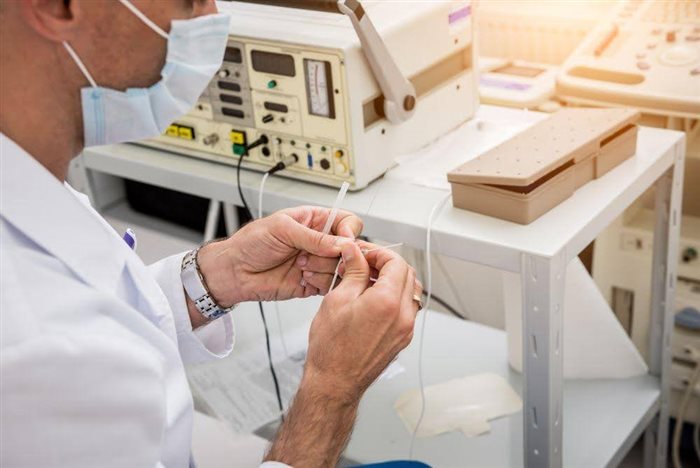Persistent neck pain and the headaches that often accompany it can significantly affect one's quality of life.
If you’ve been searching for an effective pain management option beyond temporary fixes, radiofrequency (RF) ablation treatment, particularly cervical RF ablation, might offer a more lasting solution.
Understanding the Connection Between Neck Pain and Headaches
Many individuals experiencing chronic neck pain also suffer from cervicogenic headaches, or headaches that originate in the neck. Pain signals from irritated nerves in the neck are essentially misinterpreted by the brain as head pain.
These can manifest as pain radiating from the back of the head to the front or sides, often triggered or worsened by neck movements or sustained postures like prolonged computer use or ‘tech neck’ (when you strain your neck by looking down at your phone for too long).
Addressing the underlying nerve issues in the neck is crucial for effective pain management and relief.
What is Cervical Radiofrequency Ablation and How Can It Help?
Radiofrequency ablation (RF ablation) is a medical procedure that uses radio wave-generated heat to target specific nerve tissues. By heating and disrupting the affected nerves, it blocks them from transmitting pain signals to the brain.
Cervical RF ablation therefore targets nerve tissues in the cervical spine to reduce pain signals in the neck that travel to the head.
Studies have shown that RF ablation is effective in providing pain relief for chronic headaches. However, it’s important to note that outcomes may still vary.
Always consult a healthcare provider first to determine if RF ablation is a suitable pain management option based on your specific condition.
Patient case study on cervical radiofrequency ablation
“Tammy” was a 34 year-old working mother of two who worked an office job and kept active through playing with her kids and keeping up a regular fitness routine.
Recently, Tammy’s work required her team to be all hands on deck for several weeks, resulting in her spending long hours in front of her computer.
Some time after this, Tammy began experiencing “excruciating” headaches that would radiate from the back of her head towards the front, or between her neck and the back of her head. These cervicogenic headaches would happen at least once a day for several weeks and did not seem to have a fixed trigger. She did not have any history of chronic headaches and could not identify any reason for this sudden onset, such as an accident or injury.
It greatly affected her daily life—she could not carry out her usual household tasks, sit properly, play with her kids, exercise, or indulge in her hobbies.
Tammy sought treatment at our clinic for pain relief. Upon examination, it was determined that she had painful cervical facet joints (small joints in the cervical spine) in her upper spine, possibly due to ‘tech neck’ and poor posture from her long hours at work. She was recommended cervical radiofrequency ablation following this consultation. The procedure was carried out as an outpatient treatment and Tammy was able to go home on the same day.
For a week following the procedure, Tammy experienced some soreness and light discomfort in the back of her neck where the RF ablation was carried out. This soreness gradually decreased and disappeared. During this period, Tammy also carried out the recommended rehabilitative neck movements and exercises recommended by her doctor, in order to strengthen her neck and keep her muscles gently moving and engaged.
Since the procedure, Tammy’s cervicogenic headaches have stopped. She has been able to resume her daily routine and is now more mindful of maintaining good posture and neck strength.
Identifying details in this case study have been modified for patient privacy and confidentiality reasons.
What to Expect During a Cervical RF Ablation Procedure
Cervical RF ablation is typically performed in the day surgery. This is what you can expect at our pain clinic in Singapore:
Step 1: Preparation
Before the procedure begins, your healthcare provider will explain what to expect and may ask you to avoid eating or drinking for a few hours. You’ll be comfortably positioned on a treatment table to allow optimal access to your neck.
Step 2: Imaging Guidance
The doctor will then use fluoroscopy (live X-ray) or other imaging techniques to guide the needle-like probe towards the targeted nerves in your neck. This accuracy is vital for effective treatment and minimising risks.
Step 3: Local Anaesthesia and Probe Insertion
The skin around the targeted area will be numbed with a local anaesthetic. Once the area is numb, the doctor will insert the thin, needle-like probe through the skin and carefully guide it toward the source of the pain.
Step 4: Radiofrequency Energy Delivery
Once properly positioned, the probe delivers radiofrequency waves that generate controlled heat. This heat targets and disrupts the nerve to mitigate the transmission of pain signals to your brain. Depending on the pain source, multiple nerves may be treated during the same procedure.
Step 5: Completion and Monitoring
Once the targeted nerves have been treated, the probe is removed. Then, a small bandage is applied to the insertion site. You’ll be monitored for a short period to ensure there are no immediate side effects, and you can typically go home on the same day.
Step 6: Recovery
Soreness, mild pain and discomfort, or muscle spasms in the targeted area are common side effects after the cervical RF ablation procedure. Your doctor may prescribe pain medication to help manage these symptoms. Applying ice packs to the injection site can also help address discomfort. Your doctor will provide specific instructions for neck movements and activities during the initial recovery phase.

Seeking Targeted Relief for Neck Pain and Headaches
If chronic pain is impacting your daily life, contact us to discuss pain management options that might offer you a path towards greater comfort and improved well-being. For more insights, check out our guide on what you can expect from your first pain management appointment.